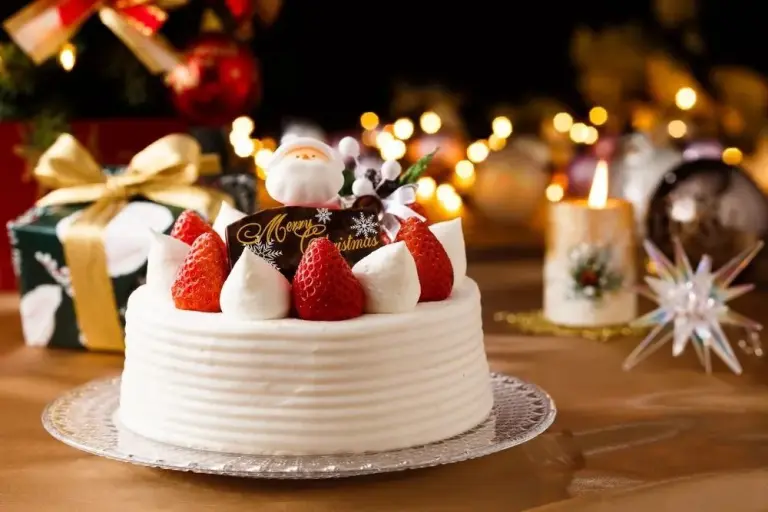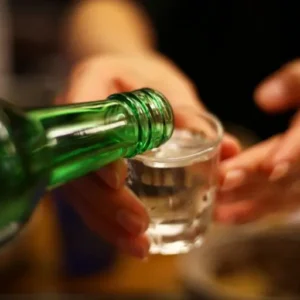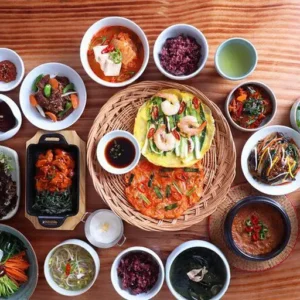Japan is a country rich in traditions and unique festivals. If you’ve already fallen in love with the Land of the Rising Sun, then don’t forget to immerse yourself in its vibrant and one-of-a-kind celebrations!
Joining Japan’s lively festivals is one of the best ways to understand its culture. You can experience the unusual Setsubun Festival, enjoy sipping sake under blooming cherry blossoms during Hanami, and take part in countless other celebrations. So, when planning your trip to Japan, make sure you don’t miss out. Pack your bags with your family and join one of Japan’s five biggest festivals!
Shogatsu – Japanese New Year
As the most important festival in Japan, Shogatsu is celebrated nationwide at the start of the new year. Although it falls on January 1st, just like in the West, the celebration stretches both before and after this date.
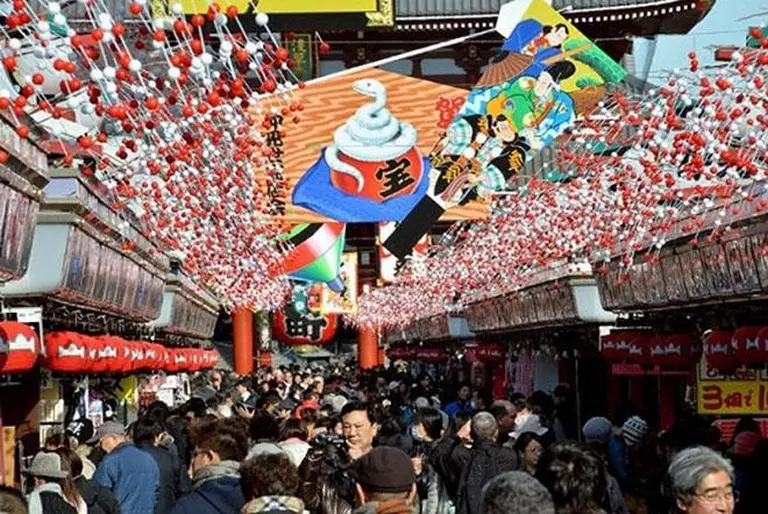
Many people begin the year by eating soba noodles (made from buckwheat) at midnight to wish for good health. At sunrise, the Emperor prays for the country’s prosperity. Unlike the West, where New Year often revolves around parties and short-lived resolutions, Shogatsu focuses on prayers for success and well-being in the year ahead.

At midnight, temple bells ring 108 times, symbolizing the cleansing of human sins and desires. Special dishes are prepared, children receive lucky money, and families gather to play games. A common greeting on this occasion is “Out with the old, in with the new.”

On January 2nd, the public is allowed into the inner grounds of the Imperial Palace—an opportunity that only occurs twice a year, the other being the Emperor’s birthday on December 23rd. Shops typically remain closed until January 3rd, and another important event, Coming of Age Day, follows on January 9th.
- When: December 30 – January 3
- Where: Nationwide, with the biggest crowds in Tokyo
>> Discover the fairytale village of Shirakawago – The hometown that inspired Doraemon
Setsubun – The Bean-Throwing Festival
Setsubun is a quirky, fun-filled celebration that marks the beginning of spring (Haru Matsuri) in Japan.
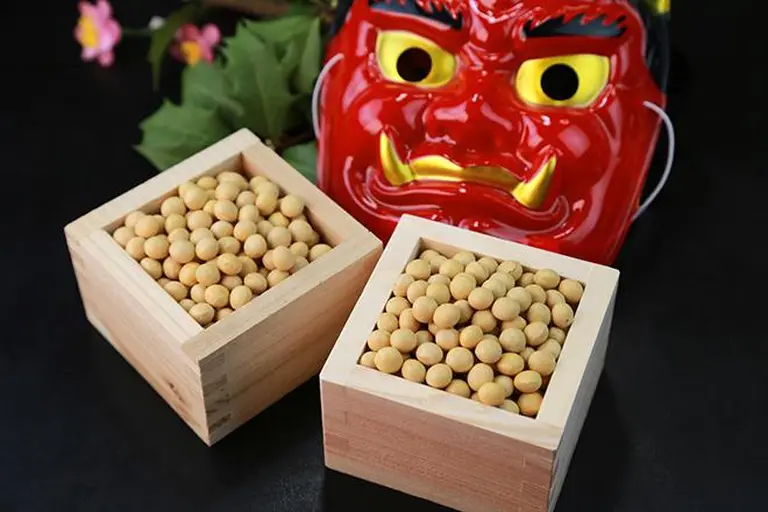
A long-standing tradition, Setsubun is even broadcast on television with celebrities participating. Throughout the country, both large and small stages are set up, where candies and coins are tossed into the crowds as lucky gifts.

The highlight is the Mamemaki ritual—the bean-throwing ceremony. Family members throw roasted soybeans to ward off evil spirits that might bring misfortune. One person wears a demon mask to play the “ogre,” while others throw beans at them, shouting to drive the demon away.
- When: February 3 – 4
- Where: Major temples and shrines across Japan

>> Essential tips for visiting Japan during new year’s holidays
Hanami – Cherry Blossom Festival
Hanami, meaning “flower viewing,” is an age-old Japanese tradition and one of the most beloved festivals in the country.
During this time, families and friends gather in crowded parks, competing for the best spots to enjoy picnics and parties under cherry blossom trees. Both day and night, small feasts are held to celebrate the fleeting beauty of the blossoms.

Some visitors enjoy sake more than the flowers themselves, but everyone cherishes the refreshing spring atmosphere. Traditional tea ceremonies, songs, dances, parades, and performances all add to the festive mood.
- When: Mid-March to May (depending on location, as cherry blossoms bloom earlier in the south and later in the north). The government issues official cherry blossom forecasts every year.
- Where: Nationwide

>> A closer look at Japan’s most bizarre “Naked” festival
Golden Week
If there’s one time of year when the Japanese truly plan ahead, it’s Golden Week!
This is one of the busiest travel periods in Japan. Four national holidays take place in quick succession, just as the weather begins to improve. Many people take extra vacation days to travel, and a large number of shops close for about a week.

The four holidays are:
- April 29 – Emperor Hirohito’s birthday (Showa Day)
- May 3 – Constitution Memorial Day
- May 4 – Greenery Day
- May 5 – Children’s Day
After Golden Week, shops reopen, but prices soar, and transportation is packed.
- When: Late April – May 6
- Where: Nationwide

>> What’s inside Japan’s most famous love hotels?
Obon – Festival of the Dead
Although not an official holiday, Obon is one of Japan’s most important summer traditions.
It is believed that during Obon, the spirits of ancestors return home to rest. Families visit temples, shrines, and ancestral graves, while lanterns and bonfires are lit to guide spirits back to their families.
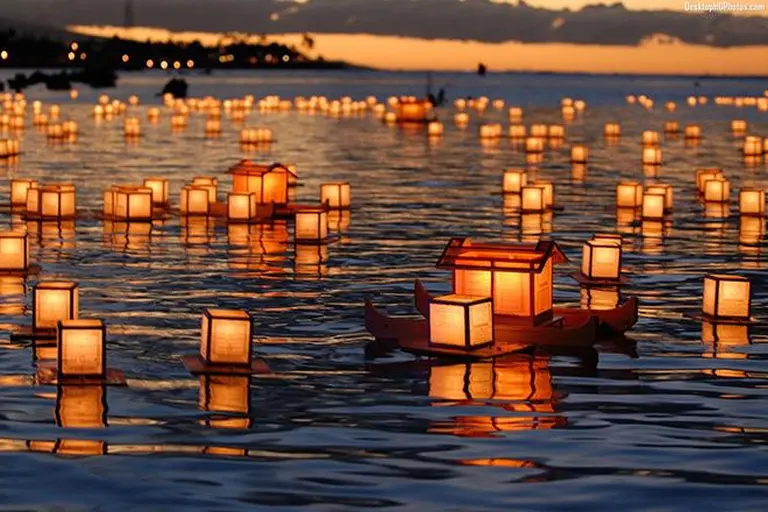
Obon is a deeply meaningful event, with many people traveling to their hometowns, causing traffic congestion and some businesses to close.
- When: Dates vary depending on the region, usually in July or August (based on the lunar calendar). Some places celebrate on July 15, others on August 15, or the 15th day of the 7th lunar month. Always check local schedules in advance.
- Where: Nationwide
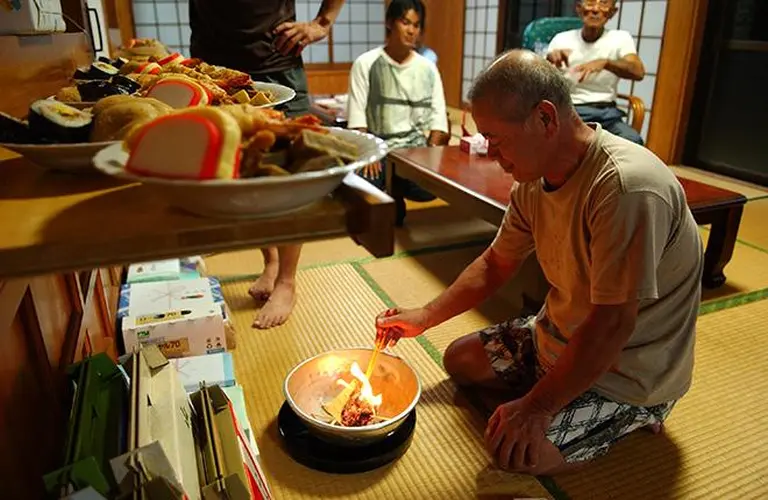
>> Japanese café serves 22-year-old coffee at over $900 a cup
The Emperor’s Birthday
Currently celebrated on December 23rd, this is one of the most patriotic days in Japan. Since 1948, the Emperor’s Birthday has been a national holiday, drawing large crowds every year.
On this day, the Emperor, along with members of the Imperial Family, appears from palace windows or balconies to wave at citizens gathered below—many braving the cold just to glimpse their monarch.
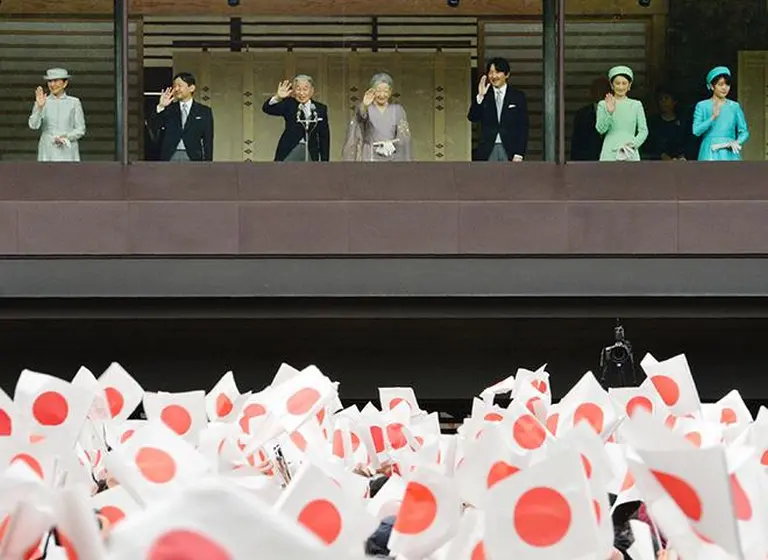
It’s also one of only two days a year when the inner grounds of the Imperial Palace are open to the public.
- When: December 23
- Where: Tokyo
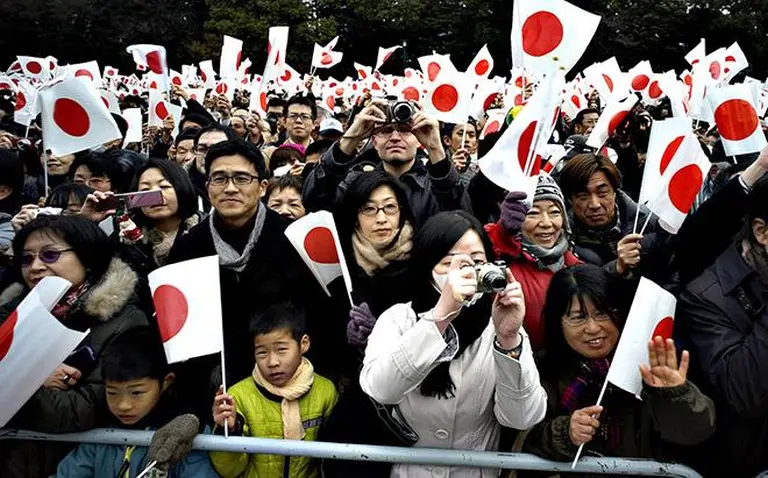
>> Top 12 unique things you must try when traveling to the land of the rising sun
These are brief introductions to five of Japan’s biggest traditional festivals, along with the Emperor’s Birthday. If you’re planning a trip, check the dates and locations carefully to make sure you catch these incredible cultural experiences!


